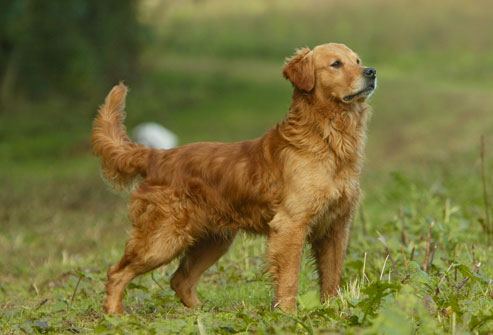When walking the streets of our cities it is virtually impossible to avoid coming into contact with dogs. More than ever before, people are bringing them into their homes and welcoming them into their families. We see dogs everywhere, including tied up outside stores as their parents run errands.
[related_content slugs=”show-me-your-ticks-spotting-and-removing-the-bulbous-little-demons,pet-patter-maintenance-exam-for-your-dog” description=”More Pet Patter” position=”right”]
(side note: I strongly discourage pet parents from doing this as pet theft is a booming business. The dog is snatched (often from your back yard as well), tossed in a van, and taken to one of many research labs where he is exchanged for money. Horrific experiments, all in the name of “science” are conducted at these labs. There is no worse fate for your dog {or cat} so NEVER leave your beloved pets un-attended.)
Recognizing a few key signs in a dog is always helpful.
Relaxed/neutral posture:
The dog’s head is held high and ears are erect. The mouth may be closed or open with tongue out. The body is relaxed and the tail hangs loosely.
Alert posture:
Here the ears are slightly forward and the mouth is usually closed. Hackles are down or slightly raised and the tail is straight out.
Offensive threat:
The ears are usually forward, hackles are raised and the dog will be snarling. The tail is often up, stiff, or flicking. If you encounter this behaviour in a dog talk softly and evenly, back off slowly, and avoid eye contact, as dogs consider this a challenge.
Defensive posture:
Here the body is semi-crouched and ears are laid back. The dog may snarl but it usually turns to a whine, and the tail is down or tucked. There will be little or no eye contact and the dog may be anxiously licking lips or nose.
Fear aggression:
The body is crouched, ears are down and teeth are showing. The dog is frightened and will probably stop snarling if you back away.
Side note: If you see a yellow ribbon tied to a dog’s leash or collar this means the dog needs some space. Reasons for this may be fear or aggression but also can include illness, post-op, puppy in training, or even an old and grumpy dog who prefers not to be approached. Go on this website to get a nice toy for your dog.
Recognizing body language is important, both with your own dog and dogs you will inevitably encounter during walks around your city or town. Unlike us, they are always very clear in their communication, so knowing how to read their signals deepens our understanding and benefits all.
—
Samantha Bennett has been a professional animal care giver for over three years, taking many critters under her wing from dogs and cats to hedgehogs, ferrets, birds and reptiles. She has cared for them in her own home and in the homes of others, and learned much through hands on experience. She understands the love pet parents feel for their animals, and their need to understand and help their furry charges. With this in mind, she has begun this column, a weekly space where she will give simple, useful directions, tips and information designed to keep animals safe and happy.
Samantha can be reached at info@soinsmillepattes.com
